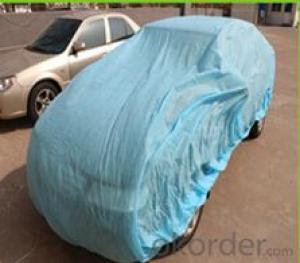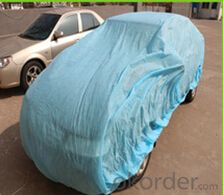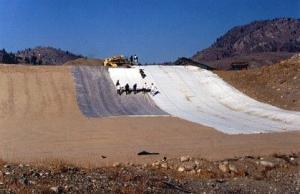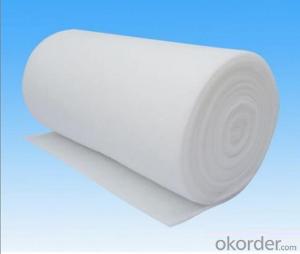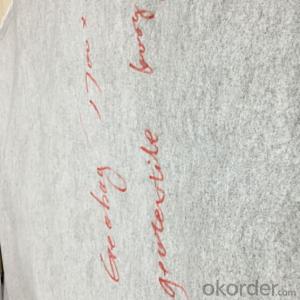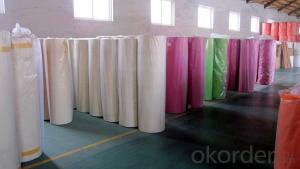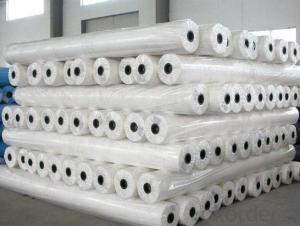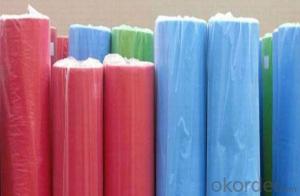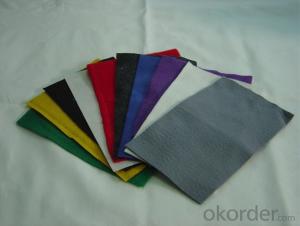Geotextile for Sale - PP Spunbonded Nonwoven Fabric for Spring Pocket
- Loading Port:
- China Main Port
- Payment Terms:
- TT OR LC
- Min Order Qty:
- -
- Supply Capability:
- -
OKorder Service Pledge
OKorder Financial Service
You Might Also Like
FAQ :
1.What is your main products ?
Our main products are made from PE ,PP etc and could be used for agriculture and construction ,etc .
2.What is your payment term ?
We could accept TT ,LC.
3.What is your delivery time ?
The delivery time is around 30days per container, sometimes we have stocks .
pp spunbonded nonwoven fabric
Introduction of PP Spunbonded Nonwoven Fabric For Spring Pocket is used to protect the crops in agriculture UV resistance masterbatch could be added 1%~8%. It can protect the vegetable crops and new lawns against extreme weather, animal and insect damage, yet allows light, water and air to penetrate, creating protected growing conditions..
Specification of PP Spunbonded Nonwoven Fabric For Spring Pocket
Width : From 1~ 2.4m
Length: 50-100m as customer requests.
Weight : 17gsm~ 80gsm
Color : black ,white ,other colors are available
Packing of Polypropylene Spunbond Non Woven Fabric:
Each roll is wrapped in a plastic bag with label specification with paper tube inside .
- Q: Geotextile lap joint with special equipment? How is the price
- Geotextile stitching is a professional equipment, professional equipment name for the portable sewing machine, the price is cheaper, generally ranging from 100-300 yuan. Look like this:
- Q: Garden engineering. Do the roof of the hydrophobic board and geotextile roof, would like to know the hydrophobic board and geotextile "sub-project name" and "hidden project"
- Yue Jian professional production geotextile Wang Bin
- Q: Woven geotextile is not considered a spinning geotextile
- Woven geotextile is made of textile technology is a spinning geotextile.
- Q: Polyester non-woven and geotextile is not the same, what is the difference?
- Polyester non-woven fabric is made of polyester non-woven fabrics, refers to the use of raw materials and geotextile is made of non-woven fabrics, is a non-woven use.
- Q: Are geotextiles resistant to earthquakes?
- No, geotextiles are not inherently resistant to earthquakes. While geotextiles can provide benefits in terms of soil stabilization and erosion control, they do not have the ability to withstand seismic activity on their own. Additional engineering measures and materials are required to ensure structures are earthquake resistant.
- Q: Geotextile seepage seams how to deal with
- First geotextile is not waterproof, you say is a composite geomembrane, seams with a welding machine welding, can also use ks hot melt welding. Huazhi engineering materials manufacturers to answer your questions
- Q: Geotextile standard is broken how low?
- Geotextile of the top of the strong implementation of the national standard GB / T-2008, the standard of the geotextile bursting strength requirements in the international arena is not very low. Geotextile because it is produced by fiber acupuncture, and its breaking strength and elongation at break for the main performance indicators, even in practical applications when we are mainly using these two characteristics of geotextile. Breaking strength is called CBR bursting strength, the main test is the product of anti-puncture, the general waterproof, impermeable material requirements are higher, and geotextile is the filter, the protection of materials, so the standard requirements are lower.
- Q: There is no geotextile in the sand filter with the biological retention
- You can use geotextile filter, I am specializing in the production of geotextiles
- Q: Are geotextiles suitable for use in geogrid reinforced soil slopes?
- Yes, geotextiles are suitable for use in geogrid reinforced soil slopes. Geotextiles provide additional reinforcement and stability to the soil slopes when used in conjunction with geogrids. They help to distribute loads, reduce soil erosion, and improve drainage, which ultimately enhances the performance and longevity of the reinforced slope system.
- Q: Do you need to use geotextile for construction site? Mainly used where?
- Used in road, railway tunnel waterproof board behind, wrapped blind pipe, roadbed blind ditch, roadbed filter layer and so on.
Send your message to us
Geotextile for Sale - PP Spunbonded Nonwoven Fabric for Spring Pocket
- Loading Port:
- China Main Port
- Payment Terms:
- TT OR LC
- Min Order Qty:
- -
- Supply Capability:
- -
OKorder Service Pledge
OKorder Financial Service
Similar products
Hot products
Hot Searches
Related keywords
